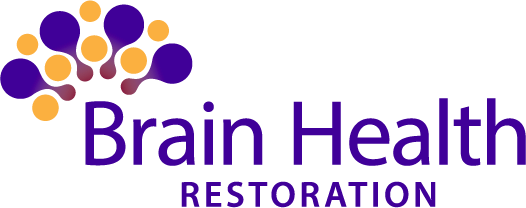According to the World Health Organization, more than 264 million people of all ages suffer from depression. It is the leading cause of disability worldwide and majorly contributes to the overall global burden of disease. Women are more likely to be affected than men.1
It is commonly known that depression and anxiety oftentimes present together. In the mental health field, the comorbidity of these two symptoms is one of the most common: 60% of those with depression also experience anxiety and vice versa. Between 1990 and 2013, the number of people suffering from depression and anxiety increased by nearly 50%.2
It is theorized that the two conditions have similar biological mechanisms in the brain and that is why we often see people suffering from both.3,4
When Drugs aren’t Working
There has been a rekindled interest in brain stimulation as a treatment for depression, anxiety, and many other conditions. Generally, this therapy is introduced when the patient is non-responsive to medications, cannot tolerate the side effects of pharmaceuticals or prefers not to take pills.
What is Electroconvulsive Therapy?
In 1938, Electroconvulsive Therapy (ECT) was introduced. This is the oldest treatment, predating even antidepressant drugs. Although it may not work for everyone, it often helps with mental health conditions including severe or treatment-resistant depression, agitation and aggression in people with dementia, catatonia, and severe mania.5
Performed under general anesthesia, small electrical currents are passed through the brain with the intention of causing a small seizure. This seems to cause changes in brain chemistry that can reverse symptoms of certain health conditions.
Although ECT has become gentler and more advanced, the risk factors are still something similar to really consider: confusion, memory loss (sometimes long-term), headaches, muscle aches, jaw pain, nausea. People with heart problems are at higher risk since during ECT the heart rate and blood pressure increase.6
A Modern, Promising Approach: TMS
Transcranial Magnetic Stimulation (TMS, rTMS and other Magnetic Stimulation) is an outpatient treatment (no sedation necessary), non-invasive and virtually pain-free.
TMS produces brief but very powerful magnetic fields that lead to the induction of electric currents in the brain, stimulating neurons in the region of the brain that controls mood and depression.
In more than 20 studies of TMS, many show a significant decrease in depression symptoms as compared to placebo treatment. To learn more, click here.
Side effects associated with TMS could include temporary pain and discomfort at the treatment site, mild fatigue, headache, scalp discomfort or tingling. There is less than 1% risk of seizures and it has been shown to be safe to use with anti-depressant medications. Typically side effects subside within the first week. Data collected since the mid-1990s has not shown any long-term issues to date.
An Advanced Treatment – MeRT℠
MeRT℠ (Magnetic e-Resonance Therapy) uses FDA-approved magnetic stimulation equipment combined with a proprietary protocol created for each individual patient. This pioneering technology is based upon an individual’s EEG and EKG with protocols written specifically for their brain at that given time. In addition, MeRT℠ treats at motor threshold levels gentler level than TMS, never reaching more than 80% of motor threshold, thereby not eliciting an involuntary muscular response.
The patient’s protocols are reviewed and revised every 10 treatments after subsequent EEGs are performed and as the brain changes. Because of the more individualized nature of the treatment, success rates have proven to be 80%, where TMS success rates fall in at about 20%.
1“Depression.” World Health Organization. 4 December 2019,
https://www.who.int/news-room/fact-sheets/detail/depression
2 “WHO global health days: How you can get involved.” World Health Organization. www.who.int/campaigns/world-health-day/2017/how-to-get-involved/en/
3Salcedo MD, Beth Jan. 19, 2018 “The Comorbidity of Anxiety and Depression.” National Alliance on Mental Illness. Nami.org. 19 January 2018 www.nami.org/Blogs/NAMI-Blog/January-2018/The-Comorbidity-of-Anxiety-and-Depression
4Israel MD, Lindsay. “TMS can offer relief from anxiety.” Healio Psychiatry. 22 July 2019, www.healio.com/psychiatry/anxiety/news/online/%7B17faefed-c45b-4064-b427-4b37ffcbb4fb%7D/tms-can-offer-relief-from-anxiety
5“Electroconvulsive therapy (ECT).” Mayo Clinic. www.mayoclinic.org/tests-procedures/electroconvulsive-therapy/about/pac-20393894
6“Electroconvulsive therapy (ECT).” Mayo Clinic. www.mayoclinic.org/tests-procedures/electroconvulsive-therapy/about/pac-20393894

